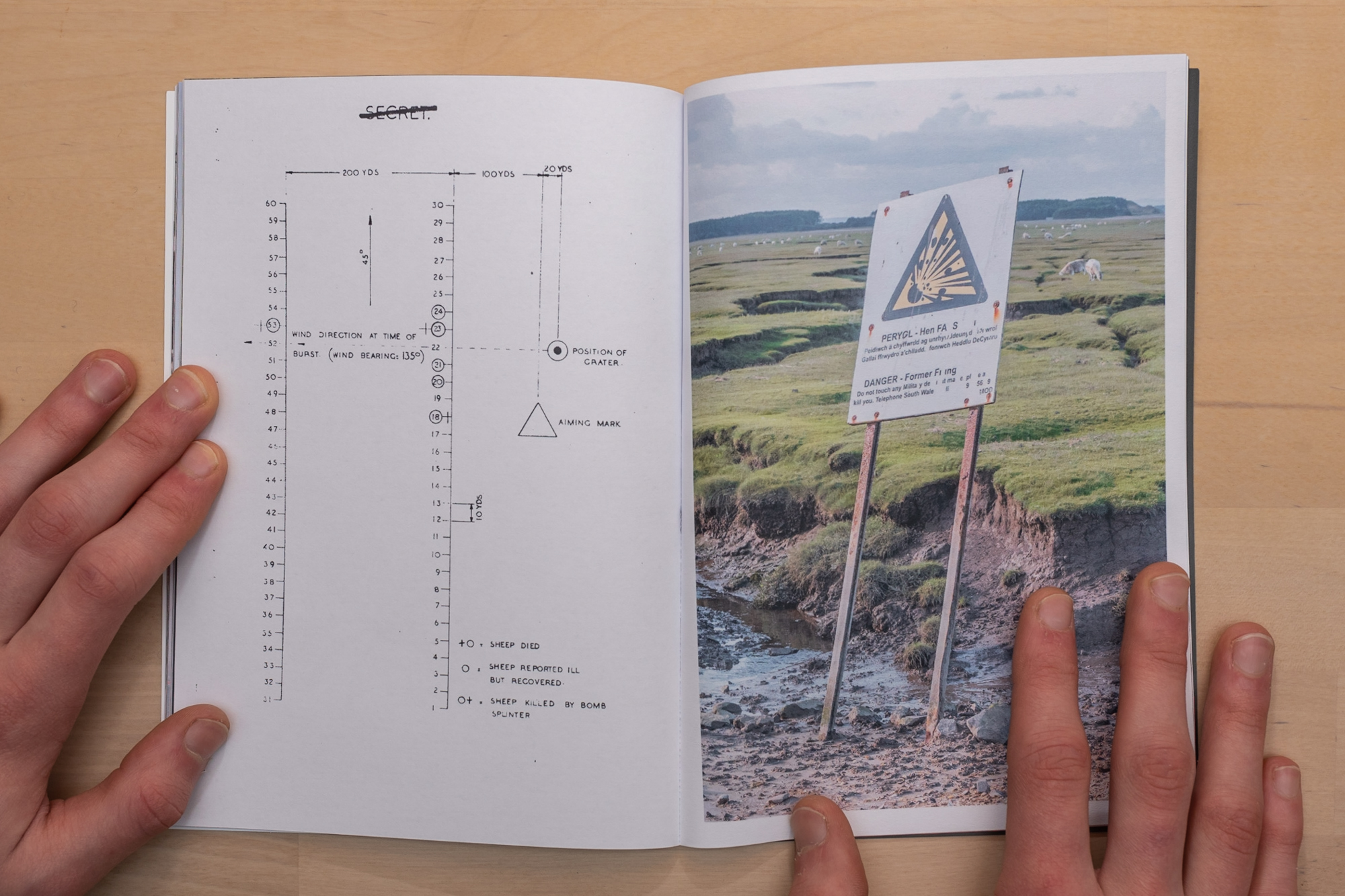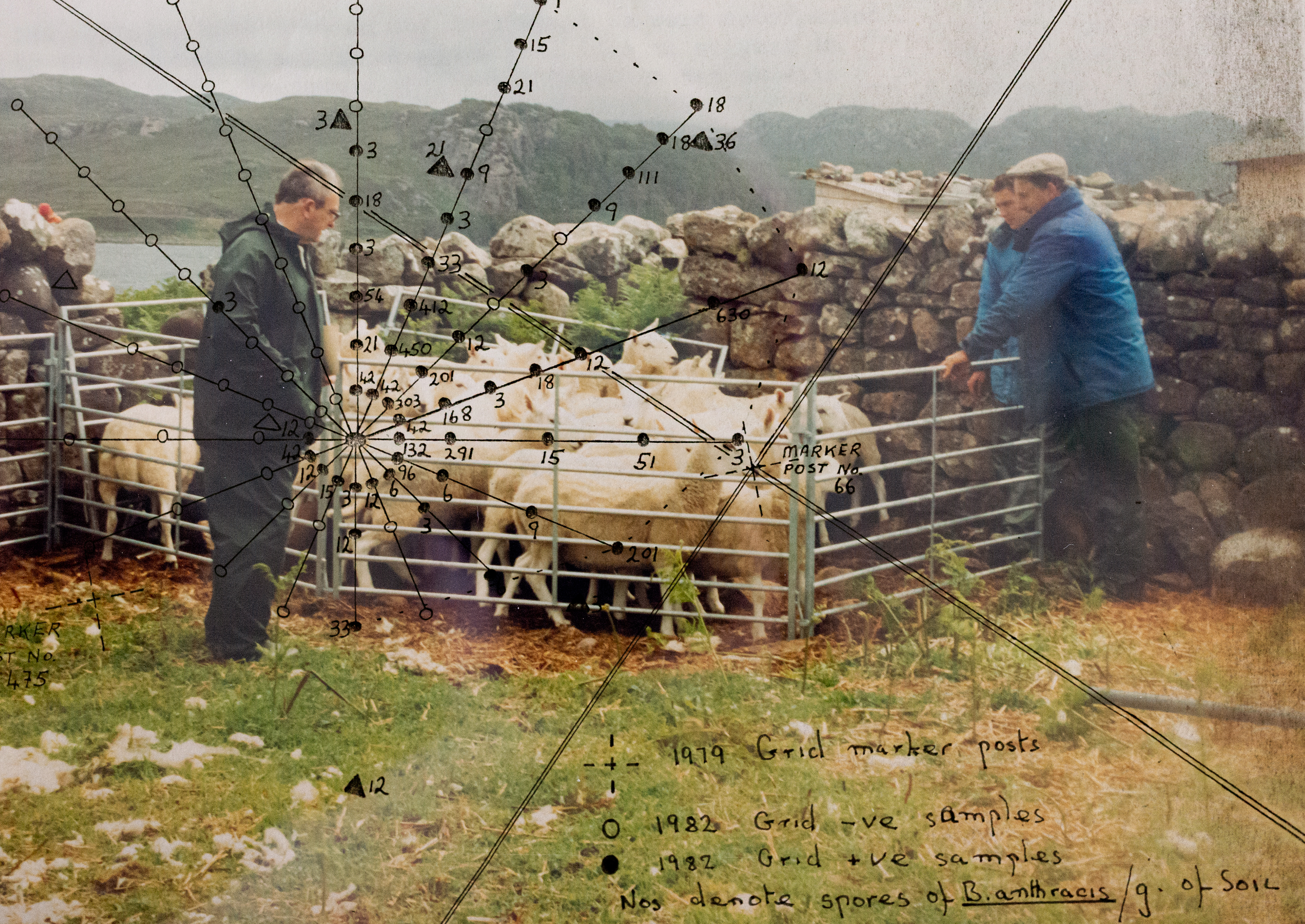Operation Sabotage
(2022 - )
︎︎︎ Investigative
︎︎︎ Archival
︎︎︎ Archival
︎︎︎
CBRN
︎︎︎ Biological Weapons
︎︎︎ Porton Down
︎︎︎ Top Secret
︎︎︎ Biological Weapons
︎︎︎ Porton Down
︎︎︎ Top Secret
An ongoing visual investigation into a series of biological weapons trials conducted in public spaces across Britain from 1950 to 1964.
In 1950, the Chief Superintendent of Microbiological Research Department, Porton Down, instigated a series of trials on the behaviour of bacterial aerosols released within vehicles, tunnels, buildings and within means of access of buildings. These trials were to determine the vulnerability of the public and government to sabotage attacks with Biological Weapon agents. The next 14 years would see five distinct series of trials using biological agents in public spaces.
This project lays out the events of each trial.

##–##–01952 (024)
Porton Down scientist recording the results of a biological trial in government owned tunnels under Wiltshire.
Porton Down scientist recording the results of a biological trial in government owned tunnels under Wiltshire.
##–##–01964 (025)
Bacillus globigii in a conventional cardboard face powder carton. This was held together in such a way as it burst open when dropped from the window of a London Underground train. A little of the original face powder was added to “provide the correct odour” so that no undue interest would have been taken in the post-trial discovery of the box on the track.
Bacillus globigii in a conventional cardboard face powder carton. This was held together in such a way as it burst open when dropped from the window of a London Underground train. A little of the original face powder was added to “provide the correct odour” so that no undue interest would have been taken in the post-trial discovery of the box on the track.
##–##–01950 (028)
In earlier trials, the main stimulant used was Serratia marcescens: a few trials were also done with Bacillus globigii. Because twice-weekly long exposures to the aerosolised bacteria were involved, full protective clothing and respirator use was adopted. Further, the batches of SM were checked for non-pathogenicity with animal testing.
In earlier trials, the main stimulant used was Serratia marcescens: a few trials were also done with Bacillus globigii. Because twice-weekly long exposures to the aerosolised bacteria were involved, full protective clothing and respirator use was adopted. Further, the batches of SM were checked for non-pathogenicity with animal testing.
Excepted Matter
(2020 - )
︎︎︎ Archive
︎︎︎ Investigation
︎︎︎ Alternative Process
︎︎︎ Investigation
︎︎︎ Alternative Process
︎︎︎ Nuclear Ontologies
︎︎︎ Radioactive Matter
︎︎︎ Deep Futures
︎︎︎ Nuclear Exceptionalism
︎︎︎ Radioactive Matter
︎︎︎ Deep Futures
︎︎︎ Nuclear Exceptionalism
Excepted Matter remaps the British nuclear state through exceptional absence at the periphery, identifying nuclearity within the exception. By holding together disparate material practices of the present, Excepted Matter extends the reach of nuclear things back to their geological beginnings and forward to their speculative futures. It follows what is made to not exist through legislation and regulation for the sake of the nuclear state, yet persists as social or cultural pasts and imposed toxic futures. Excepted Matter is an assemblage of atypical nuclear things suspended within the various ontological thresholds that define them, be that cultural, economic, political, technoscientific, or otherwise. What is revealed is a material understanding of nuclearity that is contingent, ongoing, and wildly misrecongnised.

















Stalkers
(2019)
︎︎︎ Nuclear Cultures
︎︎︎ Chernobyl Exclusion Zone
A visual record of an illegal expedition into the Chernobyl Exclusion Zone, Ukraine.
I joined a handful of Stalkers, young Ukrainians who trespass in The Chernobyl Exclusion Zone, for a week in a radioactive hinterland.
Contaminated by the world’s worst nuclear disaster, 2,600 square kilometres of farmland, forests and settlements in northern Ukraine have been evacuated and are now protected by rings of barbed wire and armed patrols. Radioactive fallout from fabled Reactor Number 4 soaked into the trees and will remain in the soil for generations. Habitation is forbidden and access strictly controlled, unless you know a way in.
Hiking dozens of kilometres a day through uncharted forests and sleeping rough in crumbling buildings, the threat posed by radiation rarely crosses the Stalker’s mind. While finding hearty food, dry shelter and uncontaminated water are more pressing concerns, capture remains the biggest threat. Stalkers must rely on cunning, instinct and their trusted networks to tame nature and stay one step ahead of the police.
Contaminated by the world’s worst nuclear disaster, 2,600 square kilometres of farmland, forests and settlements in northern Ukraine have been evacuated and are now protected by rings of barbed wire and armed patrols. Radioactive fallout from fabled Reactor Number 4 soaked into the trees and will remain in the soil for generations. Habitation is forbidden and access strictly controlled, unless you know a way in.
Hiking dozens of kilometres a day through uncharted forests and sleeping rough in crumbling buildings, the threat posed by radiation rarely crosses the Stalker’s mind. While finding hearty food, dry shelter and uncontaminated water are more pressing concerns, capture remains the biggest threat. Stalkers must rely on cunning, instinct and their trusted networks to tame nature and stay one step ahead of the police.

















ISO 668
(2024)
︎︎︎ Containerisation
︎︎︎ Logistics
︎︎︎ Speculation
︎︎︎ New Topographics
A self published zine on former Dagenham Sunday Market, soon to be part of the Barking Riverside housing development.
A photographic survey of logistical infrastructure languishing in the wake of new forms of speculative financialisation.
Open edition, first published 2024.
£5.00
15 x 21 cm
24 pages
Staple Bound





N - Anthrax
(2022)
︎︎︎ CBRN
︎︎︎ Porton Down
︎︎︎ Biological Weapons
︎︎︎ 1942 - 1943
A self published zine on British anthrax bomb trials during WWII.
A visual study of the development of Anthrax for biological weapons in the United Kingdom, made up of archival and original imagery.
Open edition, first published 2022.
£7.50
14 x 21 cm
40 pages
Perfect Bound















